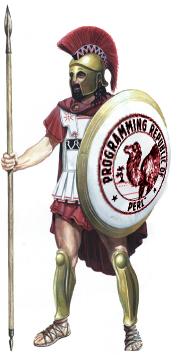aaminion00
Stoned
Tribes 1

Intro
The land has no name. It is called "world" in any number of ancient tongues. Tongues emerging from people who have descended from the mountains, and recently arrived near the rivers and coasts, amazed of the beuty of the land. Men, joined together in families, bonded by villages, grouped together by tribes. These tribes, under various forms of leadership are about to do something remarkable; establish cities. From these cities, these families, clans, and villages, will turn into mighty kingdoms. Mighty nations, sailing through the seas of time to a better future, full of glories and triumphs for King and Country. But for now, they remain tribes; nomadic people hunting and forragin for food from the nature that they worship. Waiting, for a leader to come and lead them to these glories and triumphs that appear in their dreams.

Economy
Economy is increased simply by saying so. You can't increase economy and army at the same time; it's either one or the other. It increases one per turn, and can be spent on improving everything. Army and military increases take merely one economy level, but culture may take more (although it can be increased other ways as well). Economy can also increase or decrease occasionally depending on random events. Economy is numerical.

Army
Army advances as you go through the ages. How good they are is partly determined by number, partly by tactics, and in large party by your culture rating (Which sort of translates into Technology as well). They increase by a set amount every turn, starting with 100 at the very beginning, and increase depending on the situation (techonologically and otherwise) you are in. To increase the army costs 1 economy level. There is no limit to how many times you can increase it in one turn, but please let's not be stupid. If it increases 400% in one month, your populace is not going to be happy.

Culture
Culture speaks of your civilization's non-military achievments. It increases and decreases based on your status as a nation in the age that you're living in. It is impacted by art, philosophy, architecture, and science, among other things. It goes as follows:
Barbaric, Backwards, Rudimentary, Mediocore, Pleasent, Good, Enlightenment
Additional Rules
Additional Rules will be added as we go. They will not be major, but merely like the farmland in stJNES5, or roads and such. They will be made to make the game more fun in whatever age we're living in. I will announce when new rules come up, and I will include them on the front page. If you come up with a stupid nation and ruler name you will not be considered part of the game. No need to make this into some Dungeons and Dragons crap, but I won't have this be a complete joke either.
Template
Nation:
Ruler:
Economy: 2
Army: 100
Culture: Barbaric

Intro
The land has no name. It is called "world" in any number of ancient tongues. Tongues emerging from people who have descended from the mountains, and recently arrived near the rivers and coasts, amazed of the beuty of the land. Men, joined together in families, bonded by villages, grouped together by tribes. These tribes, under various forms of leadership are about to do something remarkable; establish cities. From these cities, these families, clans, and villages, will turn into mighty kingdoms. Mighty nations, sailing through the seas of time to a better future, full of glories and triumphs for King and Country. But for now, they remain tribes; nomadic people hunting and forragin for food from the nature that they worship. Waiting, for a leader to come and lead them to these glories and triumphs that appear in their dreams.

Economy
Economy is increased simply by saying so. You can't increase economy and army at the same time; it's either one or the other. It increases one per turn, and can be spent on improving everything. Army and military increases take merely one economy level, but culture may take more (although it can be increased other ways as well). Economy can also increase or decrease occasionally depending on random events. Economy is numerical.

Army
Army advances as you go through the ages. How good they are is partly determined by number, partly by tactics, and in large party by your culture rating (Which sort of translates into Technology as well). They increase by a set amount every turn, starting with 100 at the very beginning, and increase depending on the situation (techonologically and otherwise) you are in. To increase the army costs 1 economy level. There is no limit to how many times you can increase it in one turn, but please let's not be stupid. If it increases 400% in one month, your populace is not going to be happy.

Culture
Culture speaks of your civilization's non-military achievments. It increases and decreases based on your status as a nation in the age that you're living in. It is impacted by art, philosophy, architecture, and science, among other things. It goes as follows:
Barbaric, Backwards, Rudimentary, Mediocore, Pleasent, Good, Enlightenment
Additional Rules
Additional Rules will be added as we go. They will not be major, but merely like the farmland in stJNES5, or roads and such. They will be made to make the game more fun in whatever age we're living in. I will announce when new rules come up, and I will include them on the front page. If you come up with a stupid nation and ruler name you will not be considered part of the game. No need to make this into some Dungeons and Dragons crap, but I won't have this be a complete joke either.
Template
Nation:
Ruler:
Economy: 2
Army: 100
Culture: Barbaric




